All about petunias "Opera"
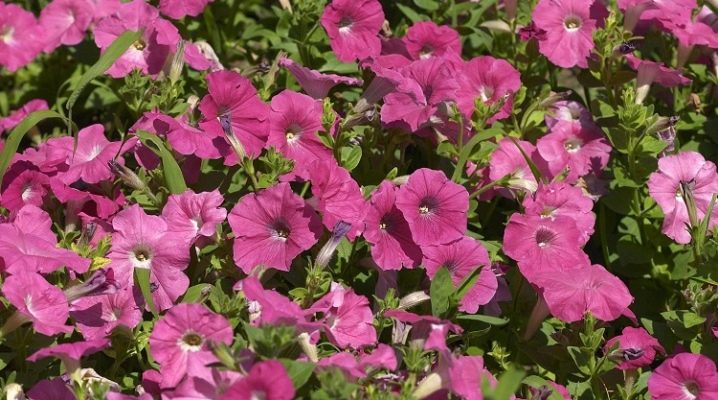
Petunia is in demand among gardeners, as this plant has amazing beauty. During flowering, a rich head of bright flowers forms on the bush. Among all types, the ampelous petunia "Opera" stands out, which is very demanding to care for.

general characteristics
The described variety was the result of the work of Japanese breeders. The flower appeared on the market in the 90s. Hybrids of this species are artificially pollinated, so they have excellent varietal qualities. The best species are selected for crossing, as a result of which the first generation inherits excellent traits from both parents.
Of the distinctive features of this flower, rather long branches can be distinguished, which is especially attractive for florists who grow petunias in pots. Such a small garden looks gorgeous on the balcony.
Some shoots reach a length of one meter, while inflorescences are formed along the entire length of the branch. If you plant a seedling in an open area, you get the impression that a flower carpet lies on the surface of the earth. One petunia bush occupies up to 1.5 square meters.
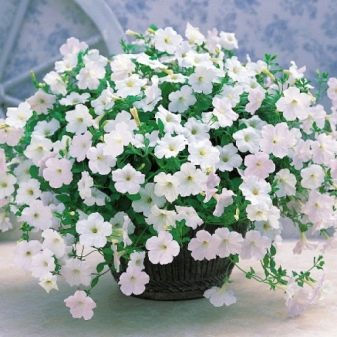
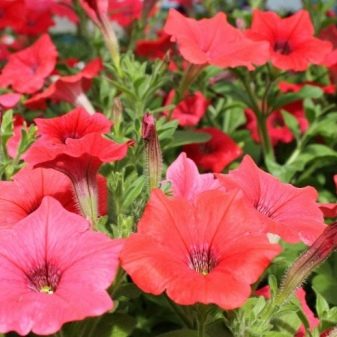
When growing petunias, you need to remember that for each flower, 8 kg of substrate is required for the root system to begin to develop normally.
Of the advantages of ampelous flowers, I especially want to highlight the absence of special requirements for the amount of light consumed. This petunia is easy to grow if you follow the basic requirements. Depending on the variety, flowers can reach 50-70 mm in diameter. The bush does not grow more than 200 mm in height.
In order for the petunia to bloom regularly, you will need to use additional feeding and remove old flowers in a timely manner.
Pruning is not considered a must, but it can help shape and rejuvenate the bush.
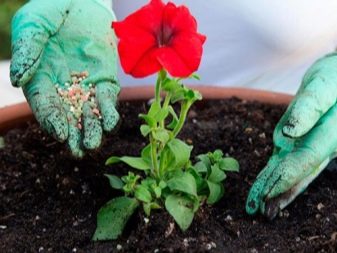
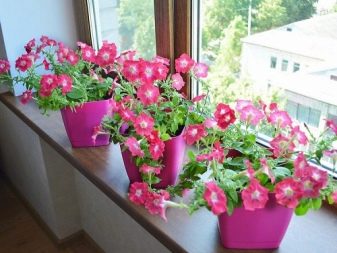
Views
There are several subspecies that belong to the Opera series.
- "Opera raspberry ice"... After blooming, the flowers reach a width of 60 mm. The inflorescences are bright, attractive, the shrub is small in height, but with long shoots. A very interesting two-tone color with a crimson center and pinkish edges of the petals.
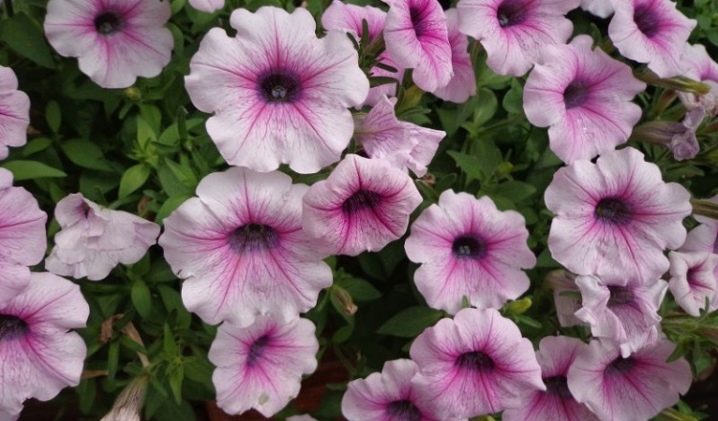
- "White Opera". This is a great option for suspended structures. The length of the shoots is shorter than that of the previous version, and is a maximum of 800 mm. The flowers are large, crystal white. The flowering period is 5 months from June.
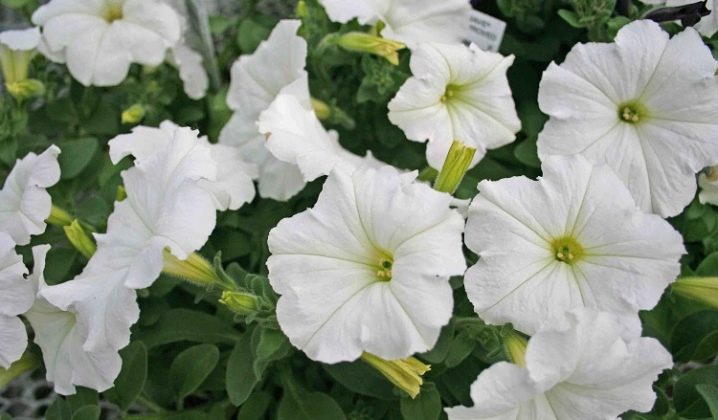
- "Opera Coral"... The presented species fell in love with plant breeders for the abundance of its flowering. At the peak, a domed cap of coral inflorescences is formed. With good care and sufficient fertilization, the stems stretch up to 1200 mm.
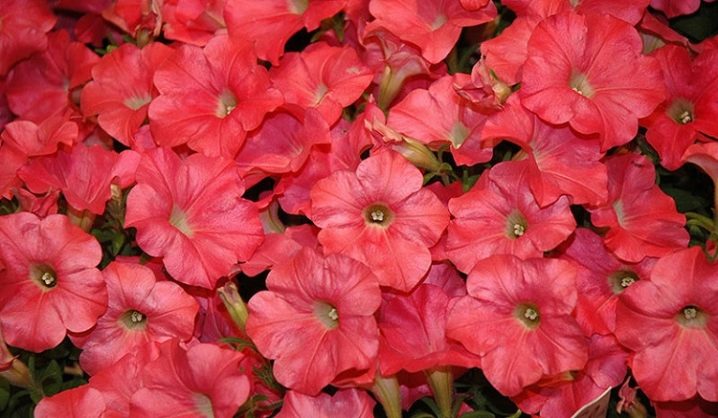
- Opera Red. During active flowering, this plant exhibits large, red flowers. While the petunia is young, it grows erect stems, over time they begin to hang down. This is a variety that has some of the largest flowers with a diameter of 80 mm.
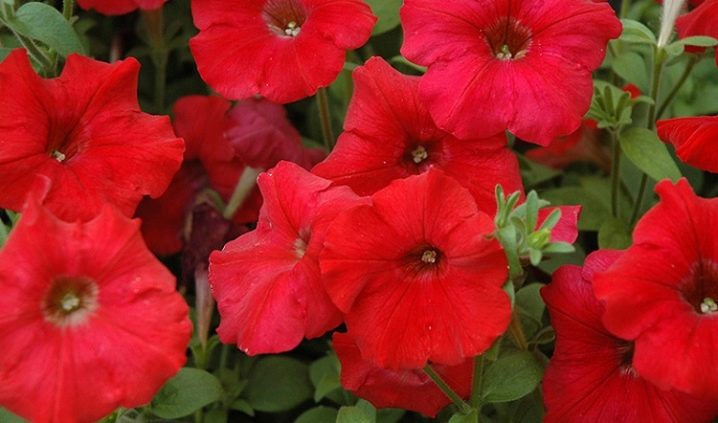
- Opera Blue. The compact bush of this petunia is abundantly decorated with flowers that grow along the entire length of the shoot. The color of the buds is blue, bright and rich.
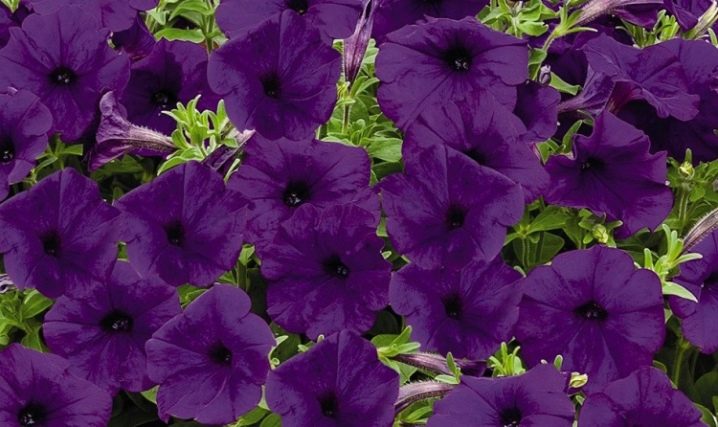
- "Opera parple"... This petunia shows a dense head of flowers of an amazing color during the flowering period. The shade of the petals is uniform, a cross between purple and crimson.
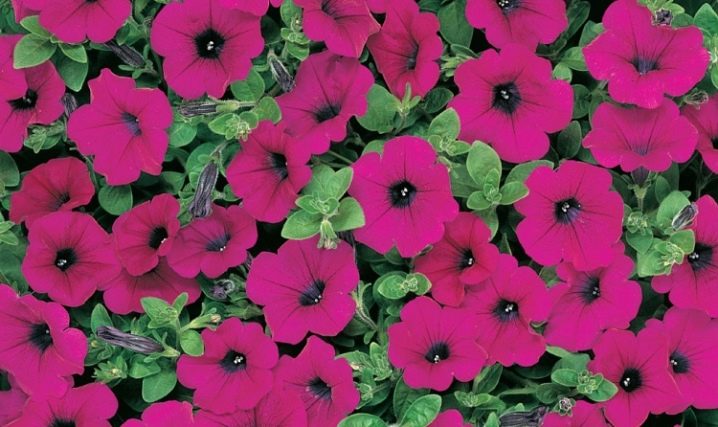
- Opera crimson veins. The plant exhibits a delicate pink palette on petals with crimson veins.The variety grows well both in pots and in a flower bed, and is distinguished by an abundance of inflorescences.
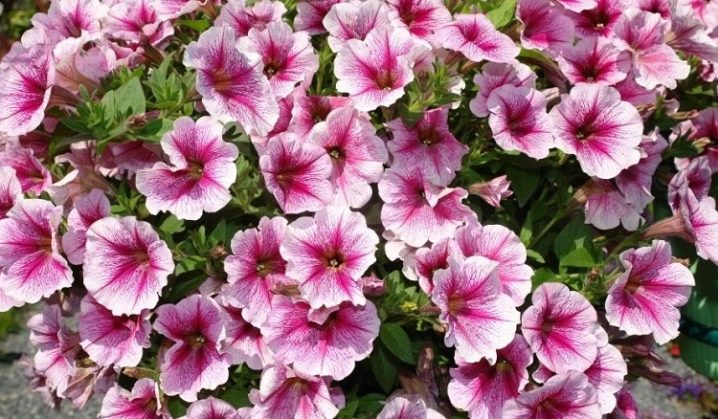
- "Blue Opera". If a gardener wants to grow a petunia with large flowers on his balcony, then this is exactly the variety that he was looking for. The flower will be eye-catching thanks to its bright blue hue.
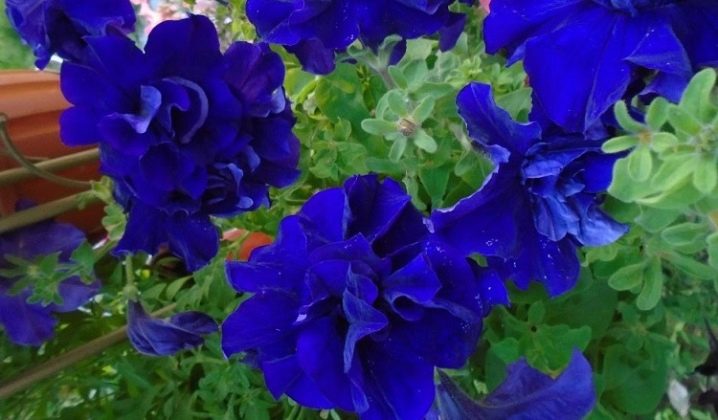
- "Opera purple"... This is another species with venation, only now purple stripes already predominate on a pink background. With a stem length of 800 mm, petunia perfectly decorates the balcony.
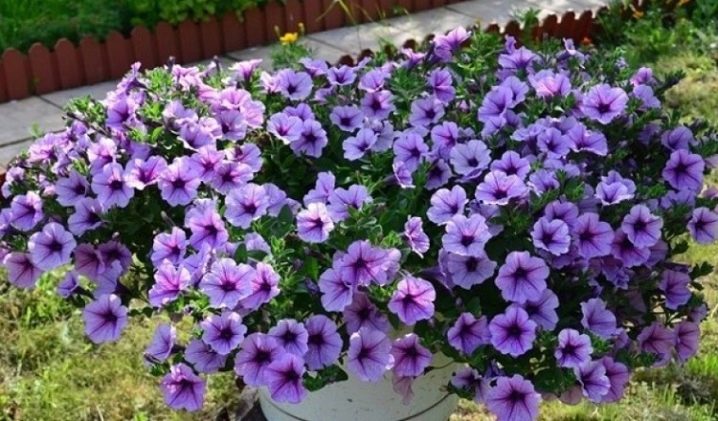
- Opera pink. Rainbow petunia with a white neckline on the petals. The variety can be commended for its large number of buds during the flowering period.
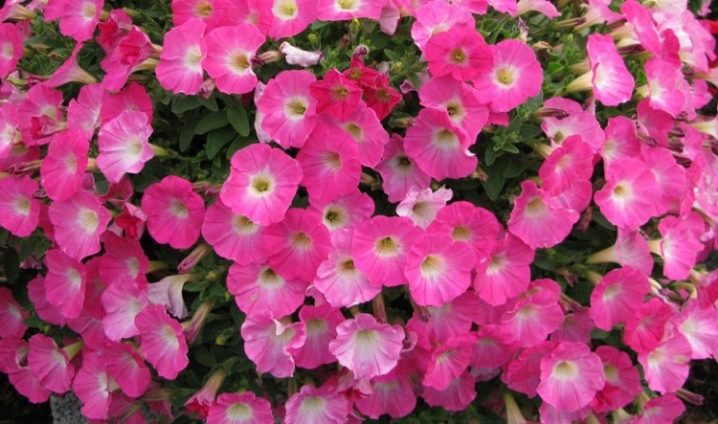
Care
Growing healthy petunias is most difficult in regions where there is not enough sun, as they are very demanding on it. The presented species needs at least 6 hours of exposure to direct sunlight every day for the plant to bloom well in the flower bed.
Best fit for planting open sun areas, away from large trees and buildings, or south-facing locations. Although petunias can grow in shade or with little light, the grower should not expect abundant flowering under these conditions.
This flower grows well in almost any type of soil, as long as there is good drainage. In a flowerbed, when planting in loam, you can simply add river sand.
Excess water is not beneficial, and a small amount of peat moss will also be a great addition to the land.
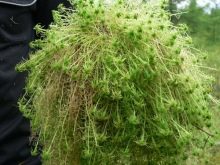
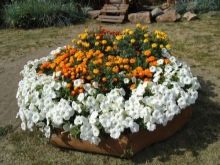

Petunias are plants that require additional monthly nutrition during the entire spring-summer growing season. Experienced growers recommend using balanced fertilizers for the best results. But do not overfeed the flower, otherwise it will spend energy not on creating buds, but on building up green mass.
When grown outdoors, cascading and other petunias should only be watered once a week. Indoors, these plants need more frequent moistening of the soil. Check the surface of the soil once a day for the level of moisture and watered with water at room temperature, if the soil is already dry by a few centimeters. Allow time for excess glass moisture to enter the container from below, then empty it.
Healthy indoor petunias are quite fertile and do not shed old flowers. They will need to be pruned additionally at least once a week to keep the bush neat and to encourage new bud growth. Petunia stems also often grow too long by mid-summer, so they are pruned.
The cut is made just above the old leaves for best results.
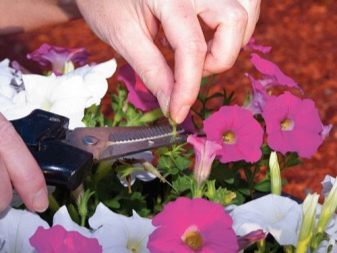
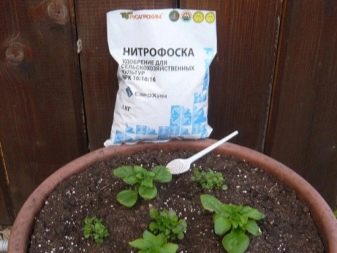
Over time, you have to deal with pests, as well as fungal infections. The most common insect a gardener encounters is the mid-summer caterpillar. It is not easy to see, but it actively eats leaves and flower buds, punching holes in them and leaving behind black excrement.
It is best to use an organic pesticide that will paralyze the caterpillar but will not harm other pollinating insects and animals. Petunias do not bloom well when they get wet. For this reason, watering should be done carefully and only at the root.
These flowers are highly susceptible to fungal viruses, resulting in yellow variegated leaves and misshapen shoots.
Gardeners who smoke or use tobacco should wash their hands thoroughly before handling petunias. Any fungicide will be an excellent remedy.

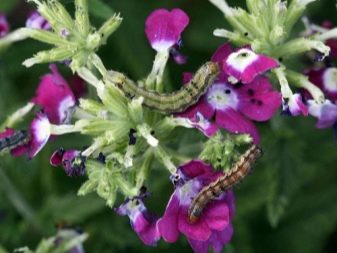
Reviews
According to reviews, petunias grow best in the sun, although they tolerate a little shade, especially in hot conditions. They need well-drained, slightly damp soil. In moist soil, they grow long shoots.
Petunias, like most annual flowers, need fertilization throughout the growing season. Gardeners note that fertilizing with phosphorus in spring and summer improves flowering. In sunny regions where there is no frost, petunia blooms all year round, but you also need to take care of it constantly.
These flowers look great on flower beds near entrances or along sidewalks. They ideally fill large voids in the lawn, around bushes. They are often used to decorate balconies.
With proper care, this flower shouldn't be a hassle.
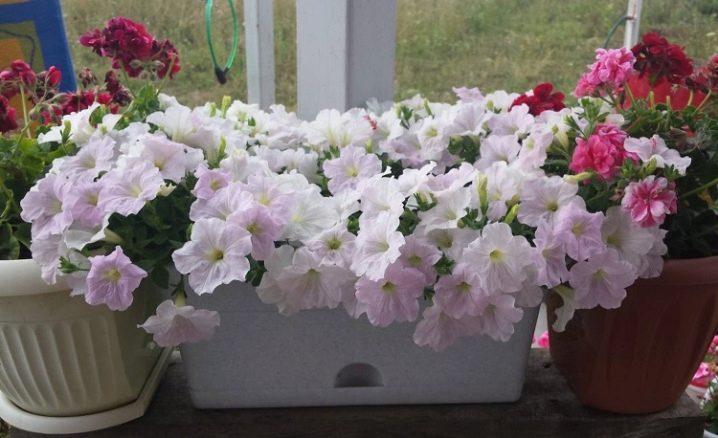
You can find out how to care for petunia seedlings after germination in the next video.







































































































The comment was sent successfully.